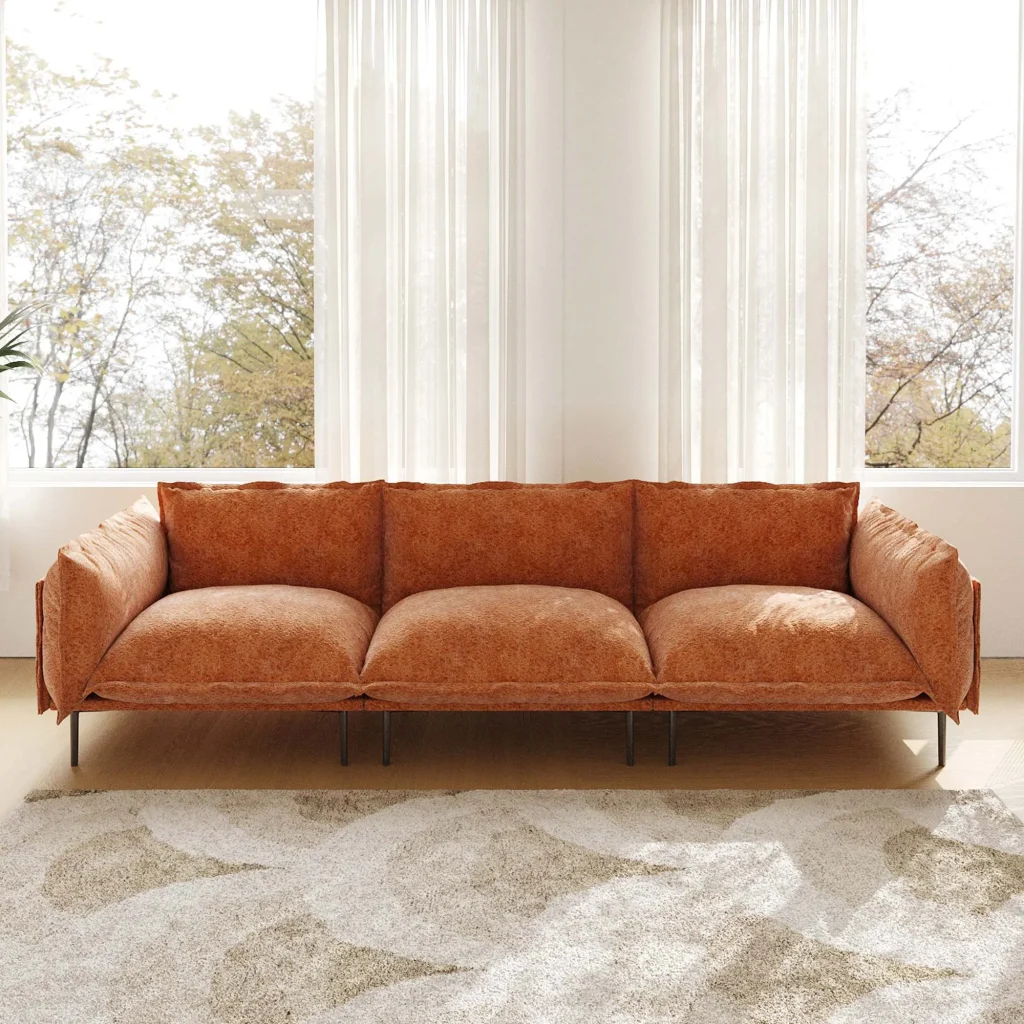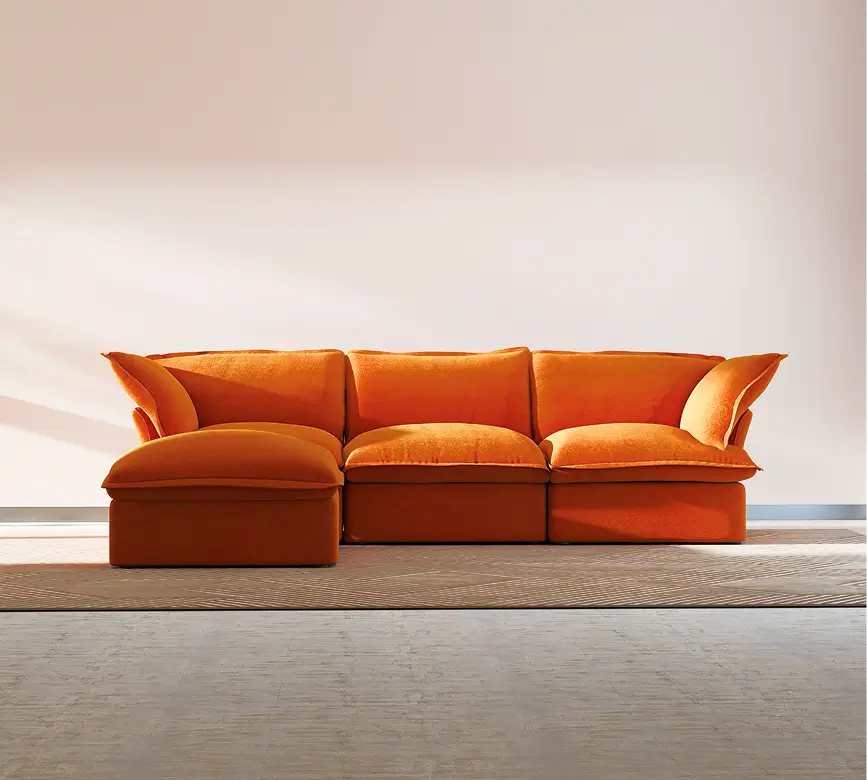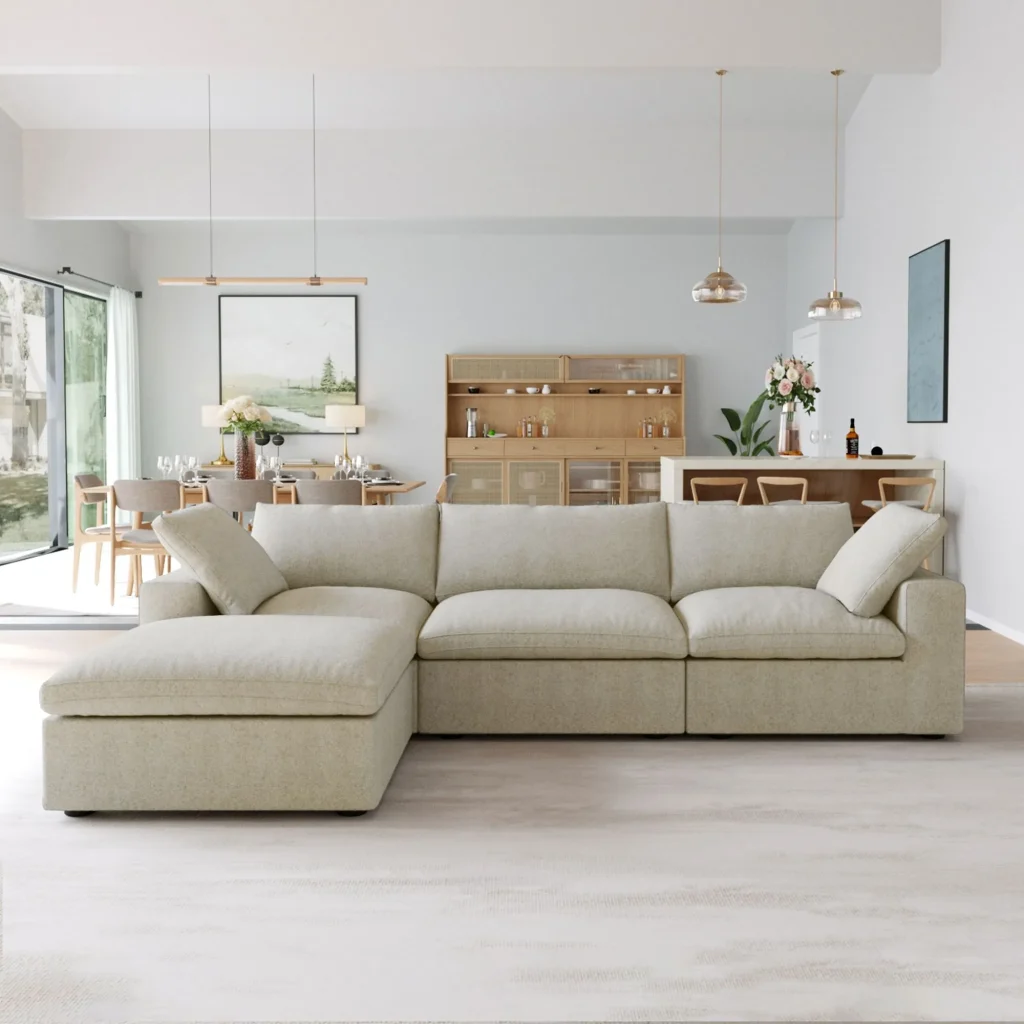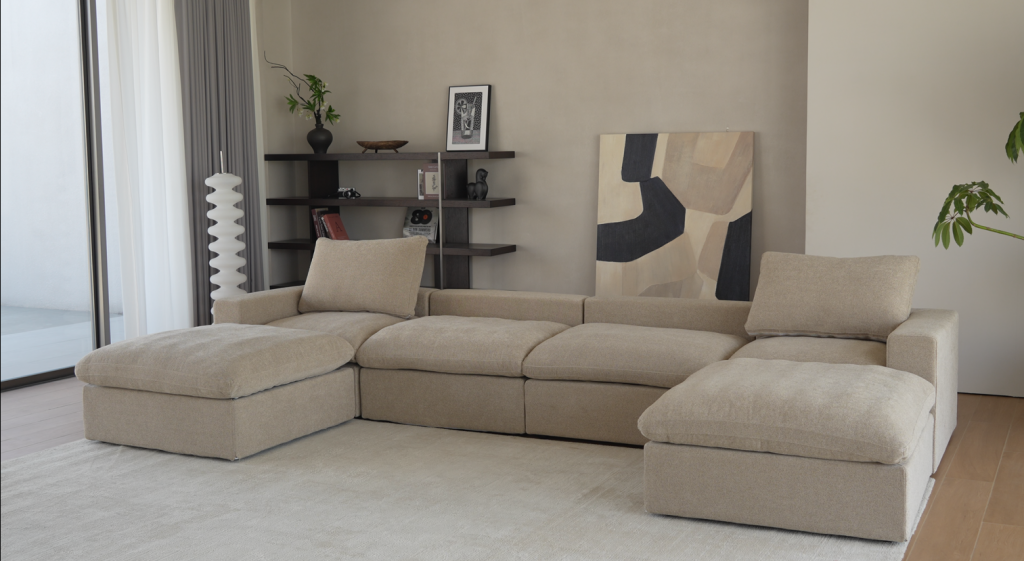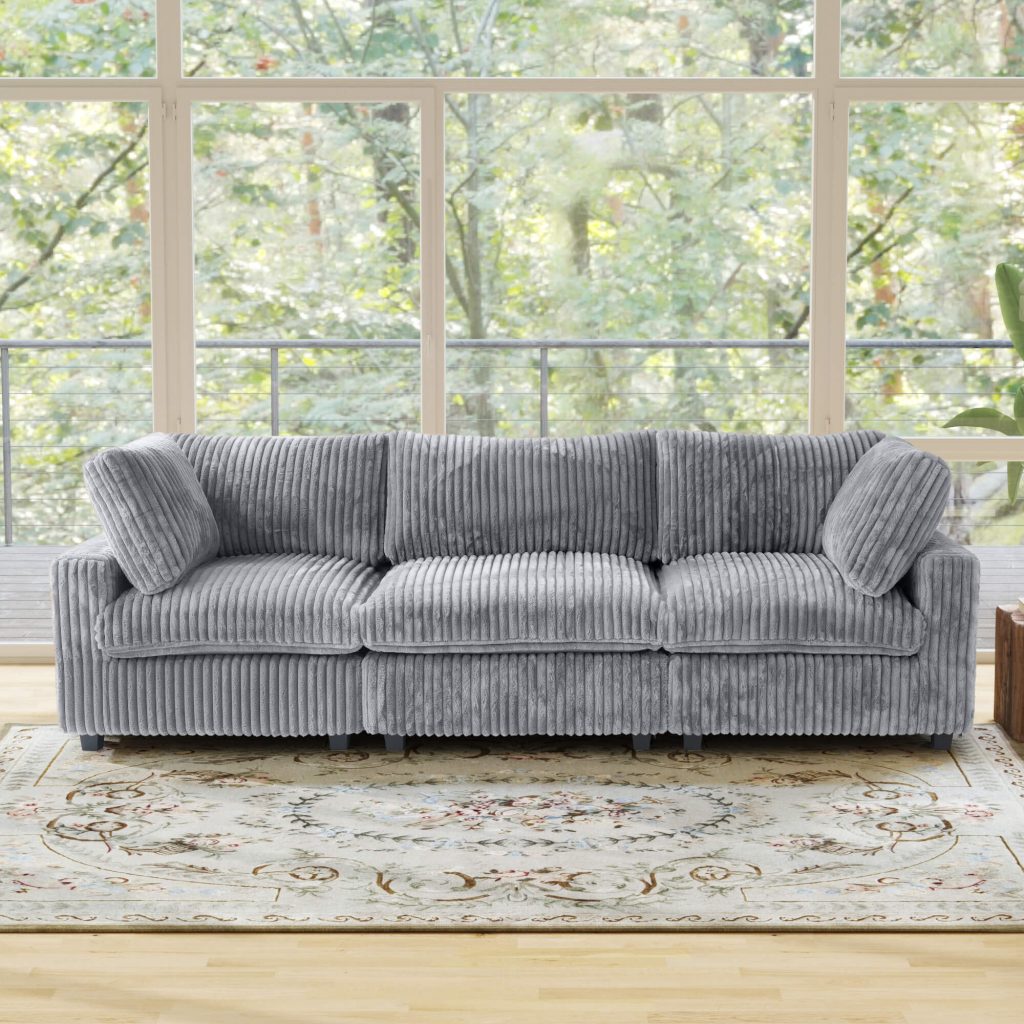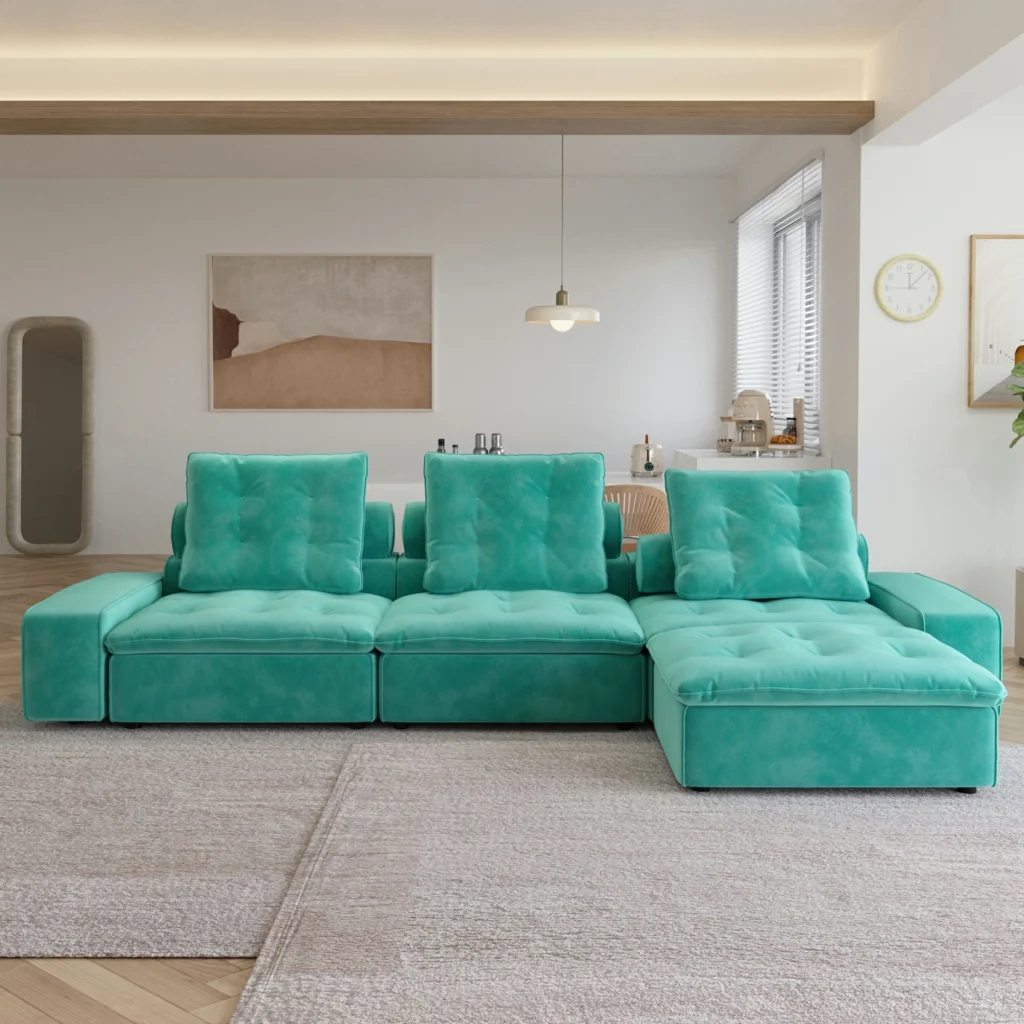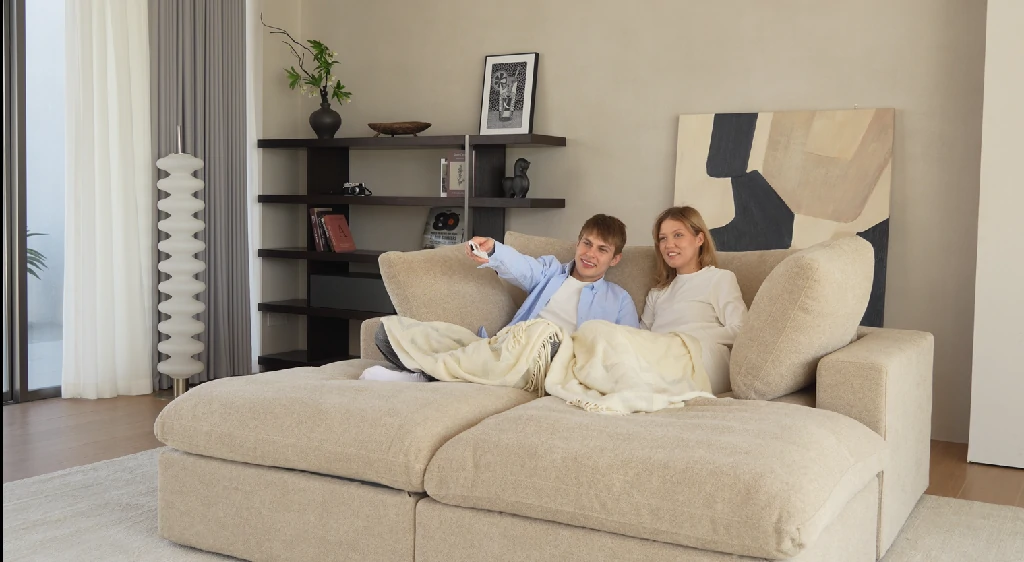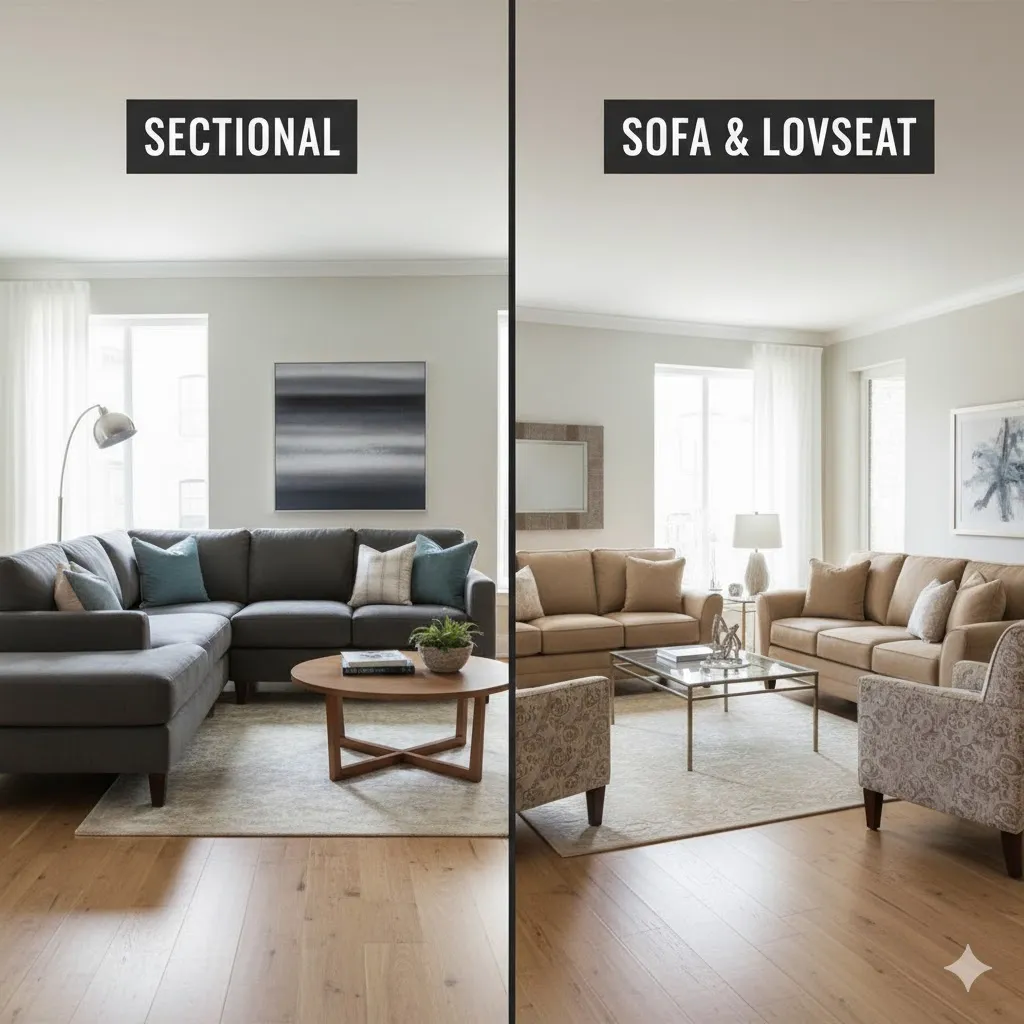Why People Love Sectional Sofas (The Big Benefits)
The rising popularity of sectionals is no accident! They offer a unique mix of style, comfort, and function that regular sofas often cannot match.
Room for Everyone to Sit and Lounge
The biggest reason to choose a sectional sofa is simple — it provides generous seating space for the whole family. Most sectionals comfortably seat five to seven people, while larger U-shaped or modular designs can fit up to nine. That’s a big upgrade compared to a standard three-seater sofa, making sectionals ideal for big families, frequent guests, or anyone who loves to entertain.
Beyond size, sectionals are built for ultimate comfort. Many models feature seat depths between 22 and 26 inches, giving you plenty of room to sink in, stretch out, or even nap. Whether you’re watching a movie, chatting with friends, or curling up with a book, a sectional offers the space and coziness that make your living room the heart of your home.
Great for Family Time
Sectionals are often called "family-friendly" for a good reason. They are the best way for the whole family, including pets and small children, to sit close together and snuggle. For many families, the sectional is the center of the home where they lay down, read, and have movie nights.
One famous spot on a sectional is the corner. Many people argue over who gets to sit in the "sweet spot" because it is the best place to lounge, sit cross-legged, or stretch out.
Versatile Designs for Any Room
Modern sectionals are no longer bulky or one-size-fits-all — they come in sleek, modular designs, cozy L-shapes, and stylish U-shapes, making them adaptable to many spaces.
Living Rooms: Perfect as the centerpiece for family gatherings or movie nights, offering both seating and lounging space.
Open-Concept Spaces: Modular sectionals can act as a natural divider between living and dining areas, creating zones without walls.
Apartments & Smaller Rooms: Compact or corner sectionals fit snugly in smaller spaces while maximizing seating without overcrowding.
Home Offices or Bonus Rooms: A small loveseat-style sectional can double as seating for meetings and a comfortable spot for breaks.
With a wide range of fabrics, colors, and shapes, today’s sectionals can match modern, minimalist, traditional, or eclectic décor, making them a flexible choice for virtually any room in your home.


